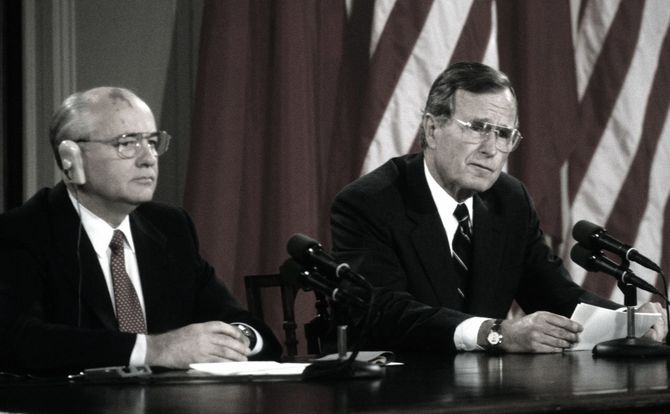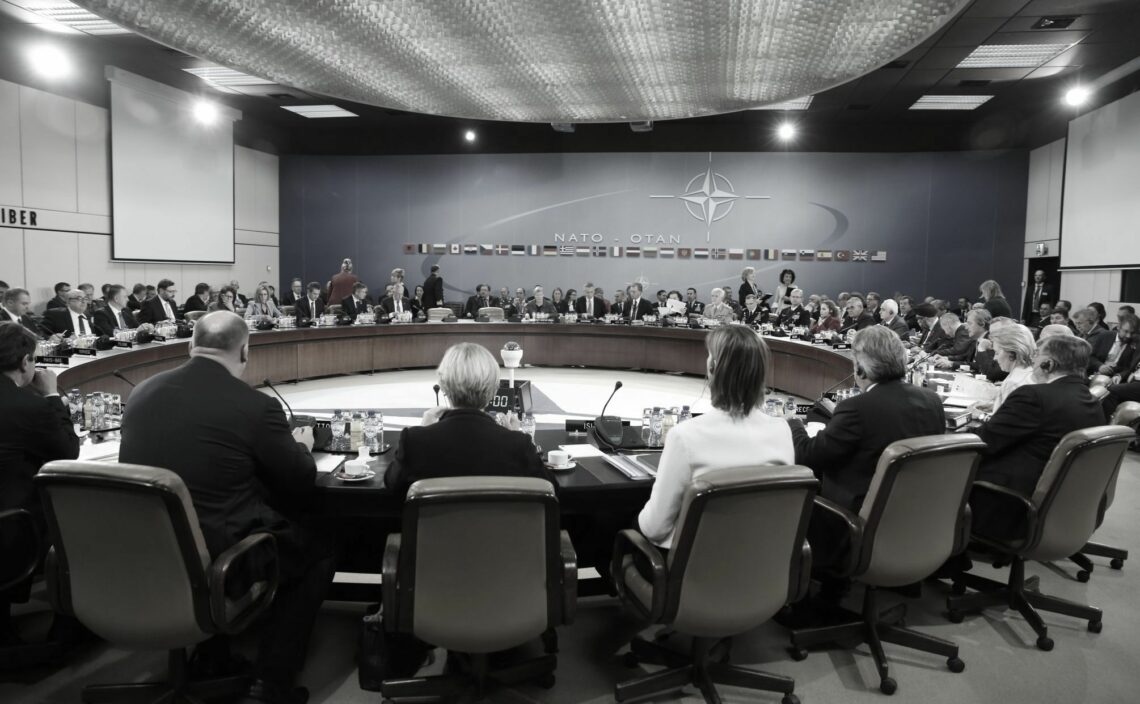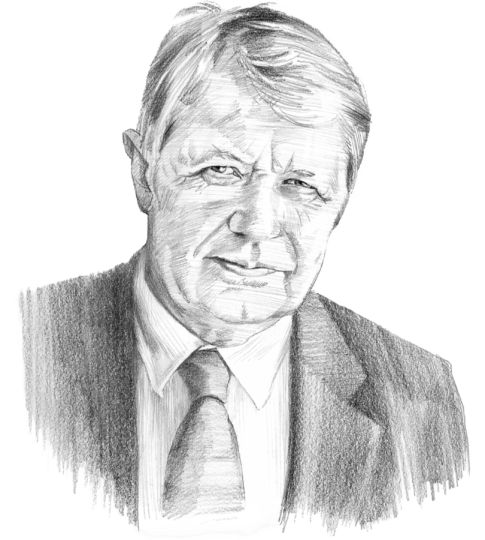NATO at 70 – where does the alliance go from here? (part 2)
The momentous change of the 1990s brought instability to the NATO-Russia relationship, as former Soviet allies turned to the West. NATO’s structure no longer suffices for defense. Europe will have to create a globally relevant defense system and keep Atlanticism alive in the interest of both itself and the U.S.

In a nutshell
- The 1990s transformed Europe far beyond what anyone imagined at NATO’s founding
- The fall of the Soviet Union brought instability and new tensions to transatlantic relations
- The revival of Russian military power has made a system of European defense necessary
- NATO could provide the framework for cooperation between a joint European military, the U.S. and other partners
This is the second in a two-part series on NATO at 70. In part 1, GIS Expert Dr. Uwe Nerlich recounts how the alliance’s role transformed from a means of stabilizing postwar Europe into an instrument of “mutual deterrence.” This installment focuses on the future of the U.S.-Europe relationship.
In the late 1980s, several developments – above all the weakening position of Mikhail Gorbachev and the breakup of the Warsaw Pact – translated into momentous geopolitical change.
Two months before the Warsaw Pact disintegrated, Czechoslovakia’s Foreign Minister Jiri Dienstbier and NATO Secretary General Manfred Worner held a conference in Prague. When it concluded, the defense and foreign ministers from every non-Soviet Warsaw Pact member except East Germany stated that they wanted their countries to join NATO, become allies of the United States and belong to the “family of democratic nations.”
Decades of systemic competition led to the dissolution of the Warsaw Pact and the fall of the Soviet Union. Yet U.S. President George H.W. Bush even traveled to Kiev to dissuade Ukraine from leaving the USSR and tried to keep the Russian Federation, the sole successor state to the USSR and its nuclear arsenal, from spiraling out of control.
Momentous change
Several developments ended one of the largest and longest-lasting military confrontations in history without a shot being fired:
- the prospect of a technology race between Russia and the U.S., driven by the Strategic Defense Initiative (SDI, frequently referred to as “Star Wars”), which Russia had no chance of winning;
- the Soviets losing their “peace campaign” in Europe when Helmut Kohl was elected chancellor of West Germany in 1983 on a platform that included deploying Pershing missiles if the USSR did not withdraw its SS-20 missiles;
- the Treaty on Conventional Armed Forces in Europe (CFE Treaty) for military parity on the continent (signed November 1990);
- German reunification;
- the joint NATO-Warsaw Pact declaration on the end of enmity (November 1990);
- the dissolution of the Warsaw Pact (completed July 1, 1991);
- the withdrawal of Soviet troops from Central and Eastern Europe (completed in 1994); and
- the dissolution of the Soviet Union (December 26, 1991).
Europe’s geopolitical order was transformed far beyond what had been envisaged in 1949: Germany was united within the NATO framework, Western Europe was stable, Soviet forces had withdrawn behind the Russian border, the U.S. was still anchored in Europe, and the transatlantic alliance was left without an enemy.
The Atlantic alliance, having so fully succeeded, lived on much longer than originally anticipated, especially by the U.S. In fact, even former German Chancellor Konrad Adenauer stated in 1965 that NATO was not intended to last for eternity.
Instability ensues
The 1990 NATO summit in London called for “reaching out to Central and Eastern Europe without isolating Russia.” This reduced NATO’s subsequent behavior to process and positioning. It left out a structure for relations with Moscow, which predictably was bound to seek a new role as a major power, particularly as it faced NATO in regions from which it had recently withdrawn.
Ironically, Article 5 was first invoked a decade after NATO had stopped considering Russia an enemy.
Ironically, Article 5 was first invoked a decade after NATO had stopped considering Russia an enemy. The provision was symbolically applied in response to the September 11, 2001 attacks on the U.S. by al-Qaeda. But while the impact of 9/11 made the U.S. more inward-looking and unilateralist, it also resulted in more NATO intervention outside Europe, deeply disrupting the previous consensus within the alliance.
Instability was bound to occur. The Soviet Union had disintegrated into 15 independent republics, Central and Eastern Europe was headed for a major transformation, the Russian Federation was set to either regain its role as a major power or spiral into chaos, and the U.S.’s future role in Europe was uncertain. European integration itself posed a huge challenge. It had been placed within the vague framework of the Charter of Paris for a New Europe (November 21, 1990), which was designed to codify a new status quo rather than to channel the quickly changing dynamics – driven by domestic challenges and the need to restabilize institutions – that were reordering the continent’s geopolitics.

These changes posed unprecedented structural and performative challenges, and priorities shifted from security to economic strength. There was uncertainty about Germany reemerging as a major geopolitical player, while the future of the U.S. as a European balancer was in doubt. No clear end was set for the transition of former Soviet republics and allies to members of the EU and even NATO – a move, it was believed, that would reassure countries formerly within the Soviet sphere about their status vis-a-vis a recovering Russia.
In fact, the U.S. had initially sought to prevent the Soviet Union’s disintegration and had insisted on Russia as the sole accepted nuclear successor state. Yet Washington failed to offer a new format for relations between the two remaining nuclear powers, which led it eventually to dismiss Russia as “just a regional power.” This was bound to increase tensions with Moscow.
Denying Russia any sphere of influence or locking it up within a legal framework for containment was not a suitable strategy for its unprecedented geopolitical and economic transformation. Tensions between Russia and the new Atlantic alliance were therefore predictable. Neither side was prepared to redefine what continued to be a relationship with major geopolitical implications. For the U.S., the possibility of support from new members was hard to ignore, and gaining a new anchor for its presence in Europe was an attractive proposition. Bringing them into the fold turned a comfortable bilateralism with Russia into a dilemma between containing its recovery and ignoring it as a resurgent global power.
Military power returns
During its short-lived conflict with Georgia in 2008, Russia discovered the extreme weakness of its armed forces and began military reforms. During the Ukrainian revolution of 2014, the U.S. began to recognize Russia’s growing military capabilities. Moreover, political support for Ukraine refocused American attention on Russian aggression.
As NATO’s intermittent interventions in the Middle East and North Africa were seen as a dead end, the U.S. began to focus on “new Europe” – the new partners in Central and Eastern Europe – without a broad consensus within the alliance. The domestic trends within some of those countries made it increasingly difficult for core Europe to continue with inclusive policies.
Integrating the newly independent states into NATO caused fresh tensions with Russia.
When events on Kiev’s Maidan turned violent in 2014, regional conflict spread to eastern Ukraine. Rather than using established consultation channels, the West “punished” Russia by discontinuing contacts within the NATO-Russia Partnership Council, which had been established precisely for crisis situations. Since then, Russia has again become an outcast within the global community. Among the Russian leadership and public, the situation stiffened anti-Western opinion, raised expectations of (unlikely) self-sufficiency and fostered hopes for a pivot toward the east (which were hardly compatible with China’s global ambitions). Moreover, within Europe, especially in countries that were under Soviet control until 1990, resentment increasingly defined geopolitical stances.
Ironically, while the alliance seemingly pacified the continent by helping to break up the Soviet bloc, integrating the newly independent states into NATO caused fresh tensions with Russia. The alliance was unprepared – both militarily and politically – for this development. New members both reinforced the systemic competition on the continent and grew less certain about which side to take, with confusing consequences for NATO and the EU.
For several decades, the Atlantic alliance had been the primary framework for formulating political and strategic policy. Even during the years of European transformation, it was still the backbone for such decision-making. Yet summit diplomacy had lost much of its power to shape policy, and the agendas no longer reflected nations’ prime concerns. In the years ahead, NATO could presumably regain some operational relevance if cooperation between its core members and partners extends to Europe’s structural challenges – in relation to the United States, Russia, China, Turkey and the Gulf region, among others.
This depends above all on how the strategic environment develops. NATO has returned to territorial defense, albeit with modest improvements in capability. In fact, hardly a single European member of NATO has a clear understanding of its own military requirements, let alone those of the alliance at large. The CFE Treaty and the withdrawal of Russian troops to behind Russia’s borders have reduced the threat of large-scale invasions. Subregional contingencies will require tailored leveraging rather than full NATO responses.
Seventy years after the treaty was signed, it still corresponds to basic North American and European interests.
Many still call for an indigenous system for European defense, not least because the 2011 invasion of Libya, with the U.S.’s reluctant support (“leading from behind,” it was called), has not been forgotten. However, the eventual creation of a European Army has been sold as another integration project. The prospect of the United Kingdom leaving the EU changed the agenda: Without British capabilities (and indeed its political DNA), an effective defense of Europe would need to be established within a whole new framework.
The future of European defense
Such a system would need to be built around core countries that have at least residual defense capacities, an ability to respond in subregional theaters, standing forces plus well-prepared reserves, and cooperation from a national defense industry. In the geopolitical context, these countries would need the ability to project force and take part in joint projects – for example, a carrier battle group built around British and French capabilities, with support from other European partners. There should also be political constraints on military activities – not ceilings on the number of weapons or restrictions on admissible systems, etc., but on the acceptable political uses of military power: a new generation of arms control.
Seventy years after the 12 founding members of NATO signed the North Atlantic Treaty (also known as the Washington Treaty), the alliance still corresponds to basic North American and European interests – security and economic well-being – even though the legal commitments it embodies have now lost much of their stringency. Even President Donald Trump does not seem to want to withdraw the U.S. from the treaty, though he questions the rationale for U.S. forces in Europe. But he was doing that long before he entered the White House.
The Washington Treaty does not contain any commitment to obligatory military responses. In fact, NATO’s military organization was put in place only five years after the treaty was signed. Yet it does still offer a legal structure, whereas NATO’s military organization no longer suffices as a substitute for Europe’s own defense. It provides a framework for military cooperation in terms of standardizing capabilities, training and exercising coordinated crisis management.
The U.S.’s huge standing forces are a function of its global role. For Europe to be militarily competitive on its own within the global context, it will also need standing forces. NATO’s purpose would be to ensure cooperation with the U.S. in extreme crises. Given the likelihood of Brexit, any homegrown European defense scheme – however far-fetched the prospect may seem now – would need to be organized outside of the EU. As an economic and political bloc, however, the EU will remain an indispensable backbone of European defense.
The situation could well drive Europe toward alternatives that the U.S. sees as threatening to its vital interests.
This hits at the very core of the Atlantic alliance. The tenor of the media coverage on NATO is more volatile than ever. It should not be forgotten that the pivotal Europe-U.S. relationship is the product of two world wars. Atlanticism was practically nonexistent in the 19th century, when the U.S. still resented Europe.
Today, the U.S. fears European socialism and Europe worries about American technological and economic dominance. President Trump epitomizes the present state of Atlanticism, fueling an anti-Europeanism in the U.S. that is bound to stir a new kind of alienation in Europe far beyond traditional anti-Americanism. The situation could well drive Europe toward the geopolitical alternatives that the U.S. sees as most threatening to its vital interests. For example, closer Eurasian ties could leave the U.S. isolated, though it would retain the leverage to forcefully interfere in global affairs.
The historic challenge that both the U.S. and Europe face will be not to lose sight of their far-reaching – albeit frequently strained – common history.
While Atlanticism is a historic circumstance, it will remain essential for policymakers on both sides to hang together in the developing global rivalry between the U.S., China, Europe and Russia. More than ever, Atlanticism is embedded within an emerging global framework – with the U.S. and China as the main drivers.
Atlanticism was an American creation that saved and protected Europe in unprecedented circumstances. In the unfolding global competition, much will depend on Europe keeping Atlanticism alive in the vital interest of both itself and the U.S., no matter how alienating developments in American society or politics may appear. Atlanticism will require political wisdom on both sides, irrespective of sporadic discord and even rivalry. Yet this requires above all a scarce commodity – prudent political leadership on both sides of the Atlantic.








